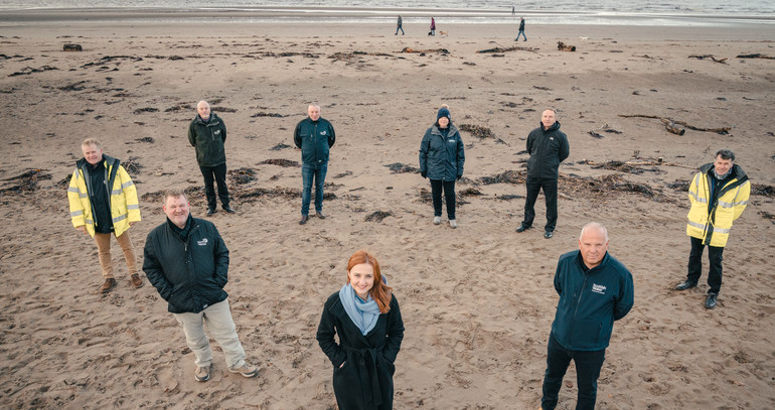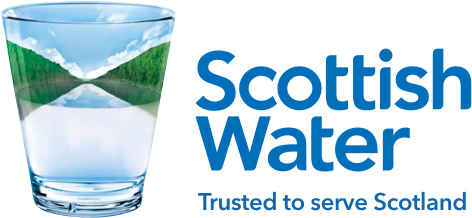Scotland’s Beaches Achieve Best Bathing Water Quality Since 2015
13 December 2021Scotland’s bathing water quality is the best it has been since 2015 when tighter standards first came into force, with 99% of all sites now classified as sufficient or better for next season. On top of that 32 out of 85 - (38%) are rated as ‘excellent’, the highest number since the annual classifications were reported from 2015.
Of particular note this year is the step change improvement at Ayr (South Beach) following collaborative work involving SEPA and Scottish Water, supported by Scottish Government, South Ayrshire Council, farmers and rural land managers, the National Farmers Union and Keep Scotland Beautiful.

Collaboration is Key
Collaborative work has ensured improvements. It involved SEPA and Scottish Water, supported by Scottish Government, South Ayrshire Council, farmers and rural land managers, the National Farmers Union and Keep Scotland Beautiful.
Having been classified as ‘Poor’ for four years in a row, 2021 was a key season for Ayr (South Beach), as another poor classification would have resulted in the loss of its designated bathing water status. Results from this season show that the planned pollution control measures and improvement projects, combined with a largely dry summer which also helped reduce pollution run-off, resulted in a significant improvement in water quality. With further improvements continuing into future years and continued collaboration and partnership working moving forward on improvement actions, the bathing water will continue to be a valued bathing water location.
Rockcliffe on the Solway coast, which had been classified as Poor since 2017, has also seen a ‘step change’ after SEPA authorised temporary treatment operated by Scottish Water at nearby Kippford for the 2021 season. The success this year is ahead of a permanent solution for sewage treatment which will sustain this improved status for the longer term.
Scotland's Results
| 2021/22 | 2020/21 | 2019/20 | 2018/19 | 2017/18 | 2016/17 | 2015/16 | |
| Excellent | 32 (38%) | Results carried over 2019/20 | 29 (34%) | 28 (32%) | 25 (29%) | 26 (31%) | 17 (20%) |
| Good | 35 (41%) | As above | 31 (36%) | 35 (41%) | 34 (40%) | 36 (43%) | 38 (45%) |
| Sufficient | 17 (20%) | As above | 20 (24%) | 13 (15%) | 16 (19%) | 11 (13%) | 12 (14%) |
| Poor | 1 (1%) | As above | 5 (6%) | 10 (12%) | 11 (13%) | 11 (13%) | 17 (20%) |
| Total Bathing Waters | 85 | As Above | 85 | 86 | 86 | 84 | 84 |
Terry A’Hearn, Chief Executive of the Scottish Environment Protection Agency (SEPA) said: “Improving Scotland’s water environment is a key priority for SEPA, and that includes the bathing waters so many of us enjoy. Across Scotland, we work to protect watercourses through licensing, inspection and regulation of discharges, and pollution incident response. In addition, we provide advice and guidance to the public, industry, developers, and local authorities.“The successes at Ayr (South Beach) and Rockcliffe demonstrate the bold and timely action that can come from partnership working. We’ll continue to work with our partners to raise or maintain the state of bathing waters throughout Scotland, with particular attention on Dhoon Bay in 2022.”
Terry A'Hearn
Chief Executive of the Scottish Environment Protection Agency (SEPA)
“The successes at Ayr (South Beach) and Rockcliffe demonstrate the bold and timely action that can come from partnership working. We’ll continue to work with our partners to raise or maintain the state of bathing waters throughout Scotland, with particular attention on Dhoon Bay in 2022.”
Minister for Environment and Land Reform Mairi McAllan said: “Scotland's bathing waters are so important to our environment and to people's health and well-being and it is great to see hard work and investment delivering results.
“This is great news for the people of Ayr and the thousands of people who visit its shores every year. Ayr beach is one of Scotland’s most popular visitor areas, with a long tradition of welcoming people from far and wide to enjoy its coastline. By investing in improving Ayr's bathing waters along with others across Scotland, we have made sure many more people can continue to enjoy them and will potentially bring a boost to the local tourism economy."
At Dhoon Bay, SEPA is working closely with the local community and the local authority to put in place improved private sewage treatment systems serving domestic homes in time for the 2022 Bathing Season, with funds made available by the Scottish Government. South of Scotland Enterprise is also involved in plans to upgrade treatment at a caravan park in an area that is important for tourism. These actions are aimed at improving water quality in what will be a critical year for this location.
While season results are normally based on a four-year rolling average, when there is a significant improvement that is sustainable in the future, it is appropriate to use a “step-change” to classify using one season’s samples. The improvements at Ayr (South Beach) and Rockcliffe are significant enough that, alongside continued beach management, on-going use of SEPA’s daily prediction signage and discounting systems and upgraded electronic signs for 2022, there is good confidence that similar classifications should be maintained in future years.
The Scottish Government funded “My Beach Your Beach” campaign which is delivered by Keep Scotland Beautiful has also successfully helped people care for our beaches and bathing waters by raising public awareness to reduce beach pollution from dogs, gulls, and litter. The campaign has focused its activities at Ayr, Troon, Irvine, Saltcoats/Ardrossan, Kinghorn, Portobello and Fisherrow beaches.
Significant Scottish Water investment
Ayr (South Beach)
Scottish Water’s investment of around £10 million, including increased storm storage capacity at two wastewater treatment works, has driven clear improvement in water quality at Ayr (South Beach), which now achieves a “Good” classification. Temporary chemical disinfection at Minishant septic tank also proved to be successful and this improvement will be made permanent with Scottish Water installing a new wastewater treatment works for this location.Additional work in the coming years will include first-time provision for properties which currently discharge to the River Doon, with around £3 million of targeted Scottish Government funding as part of a programme of improvements.
Rockcliffe
A significant improvement in water quality was seen at Rockcliffe and the Bathing Water would achieve an “Excellent” classification if the classification was calculated on single year data.During 2020/21, Scottish Water installed chemical dosing as a temporary measure at the septic tank at Kippford at a cost of around £220,000. Dosing is proposed to continue until a new wastewater treatment works is constructed, along with a new discharge point, by 2024.
Simon Parsons, Strategic Customer Services Planning Director at Scottish Water, said:
“We’re delighted that our £10 million investment in wastewater infrastructure at Belleisle, Mauchline and Drongan has positively contributed towards protecting the bathing water status of Ayr (South).
“A collaborative approach with the Scottish Environment Protection Agency, South Ayrshire Council and other key parties was instrumental to expediting this major investment and has ensured its successful delivery.
“In addition to the improved treatment capability that this investment brings, the continued operational diligence of our assets in the area is helping to ensure the best possible water quality is achieved. This is great news for local people, the local tourist industry and the environment.”
Farmers and land managers working together to improve Scotland’s rivers
SEPA has been working alongside NFUS over a number of years to help farmers and rural land managers reduce diffuse pollution affecting both Ayr (South Beach) and Rockcliffe catchments.Inspections have shown that of 410 across the two areas only a small number in Ayrshire are still completing remedial measures. All others are fully compliant, with many adopting new practices and spending significant sums of money to improve slurry storage, fence off water courses and install alternative water supplies for livestock. Around £50 million has been spent on improvements, through self-funding and grants from Scottish Government, and in many cases farmers have gone even further than is legally required to help protect Scotland’s water environment from farming activities.







